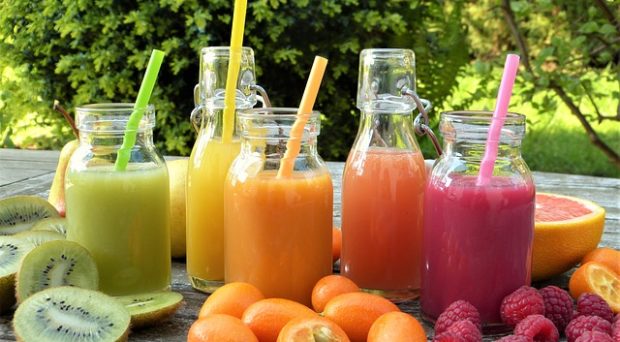
How do we make sure that nutrition labels making the 5-a-day claim aren’t being used to falsely give the impression that a product is healthy?
The WHO 5-a-day fruit and vegetable (FV) guidelines generally recommend consideration of fruit juice as only one FV portion regardless of quantity, for reasons based on processing and fiber breakdown.
If a product claims to contain two or more portions of your 5-a-day FV, this should come from more than one fruit or vegetable and it should also be ensured that that the serving size is appropriate and the amounts of saturated fat, salt and sugar are limited.
Although there are government schemes in place in various countries, manufacturers will sometimes make their own claims on food packaging, which are not covered by government regulations. Provided that manufacturers are following the best practice guidelines for the industry, this should mean that the product contains 80g (or more) of fruit or vegetables in one serving.
Food product labels which highlight the healthy component of a product can have positive impacts of healthy dietary profiles. However, if the ‘healthy component’ of a product is exaggerated, this could lead to negative effects.
With this in mind, researchers from Bournemouth University carried out a study, recently published in BMC Public Health, which investigated the impact of a ‘3 of your 5-a-day’ versus a ‘1 of your 5-a-day’ smoothie product label on subsequent FV consumption. Using an acute experimental design, 194 participants (90 males, 104 females) were randomized to consume a smoothie labelled as either ‘3 of your 5-a-day’ or ‘1 of your 5-a-day’ in full, following a usual breakfast.
Two FV product labels were used. Each product label stated the product as a ‘smoothie’, included the smoothie flavor, and stated either ‘3 of your 5-a-day’ or ‘1 of your 5-a-day’, using the recognized national UK logo for the 5-a-day FV message. All participants were asked to look at their smoothie before consumption and were required to consume their smoothie in full, although neither the label nor the message were mentioned
Subsequent FV consumption was assessed using 24-h recalls.
The authors found that exposure to a ‘3 of your 5-a-day’ FV label following a usual breakfast resulted in reduced subsequent FV consumption compared to exposure to a ‘1 of your 5-a-day’ label. This can probably be explained by the fact that consumers felt they had achieved higher adherence to the dietary goal by consuming the product with this label and therefore allowed themselves lower adherence with subsequent FV consumption.
The effect viewed was largely driven by changes in consumption in usual high FV consumers, in females, and in vegetable as opposed to fruit consumption.
The results of this study indicate the potentials dangers of providing exaggerated information on food product labels with regards to FV provision. Greater regulation may be required to ensure accuracy in these types of messages.
Comments